The wet weather continues to disrupt grazing plans around the country. Teagasc held an early grass walk on the farm of Paddy McGing who farms in Ballyglass, Co Mayo.
Paddy’s farm is a relatively dry farm but the weather is taking its toll. Cattle were turned out at the end of January/early February but had to be rehoused after two weeks and are in since due to the weather.
Paddy runs a store-to-beef system. He buys in store heifers in July and August every year in local marts, such as Balla and Ballinrobe.
The heifers come in around the 430kg mark in July to August each year and are kept for about 12 months and slaughtered the following June, July and August.
Slaughter performance
Average factory price achieved per animal was €2,031 in 2023 with the average beef price coming in at €5.23/kg. Average carcase weight came in at 388kg with an average slaughter age of 27.7 months.
The average grade was an R+ with an average fat score of 3+. Heifers are slaughtered locally in Dawn Meats in Ballyhaunis.
“I don’t go to the mart myself. I get an agent to buy them for me. He knows exactly what I want and he leaves them in the yard for me. I’m working so it makes sense for me and he is probably able to pick up better value than me anyway.”
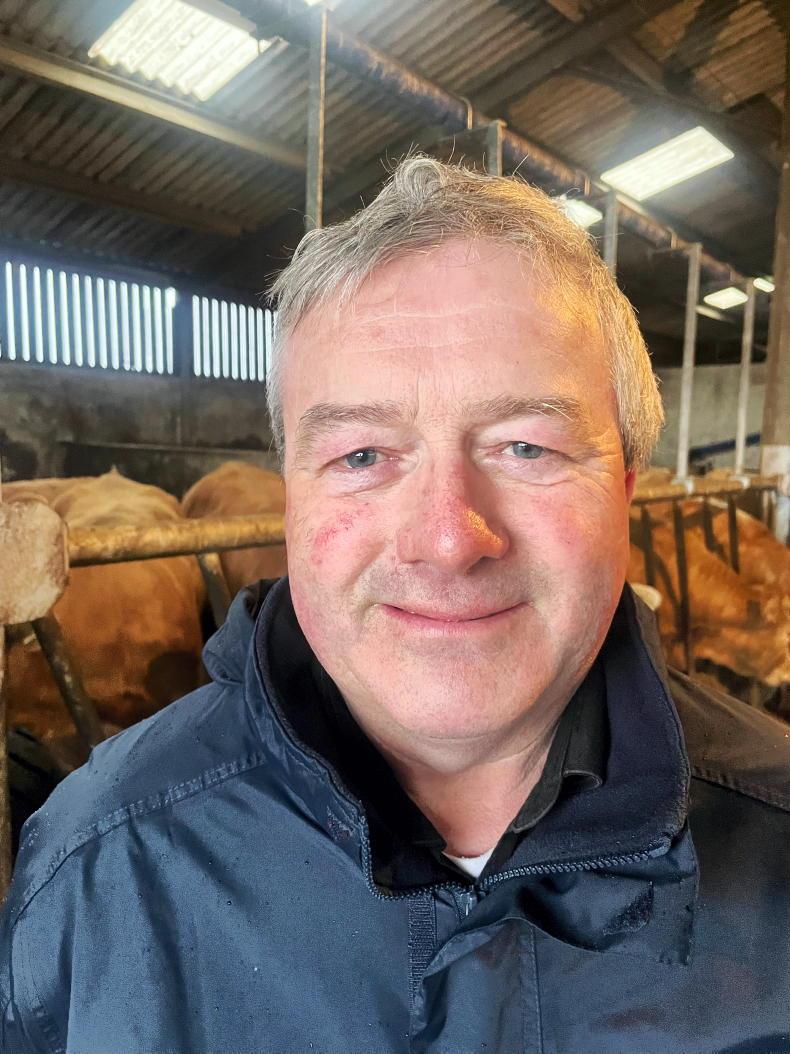
Paddy McGing.
Paddy explained that 2023 was a frustrating year for finishing cattle with prices taking a dip from the middle of the year onwards. Paddy started to slaughter his heifers in June and the last 14 in August. Had the price for the last 14 cattle stayed at the June price Paddy would have been better off by €3,000 on the load of 14 cattle.
Quality silage
Local Teagasc adviser Alan Nolan led a good discussion on making quality silage. Paddy got some of his silage ground grazed off earlier in the year, but there is currently about 50% of it not grazed.
At the moment, it doesn’t look like this will be grazed given the weather over the last few days and it will be likely closed up in early April for silage without grazing it.
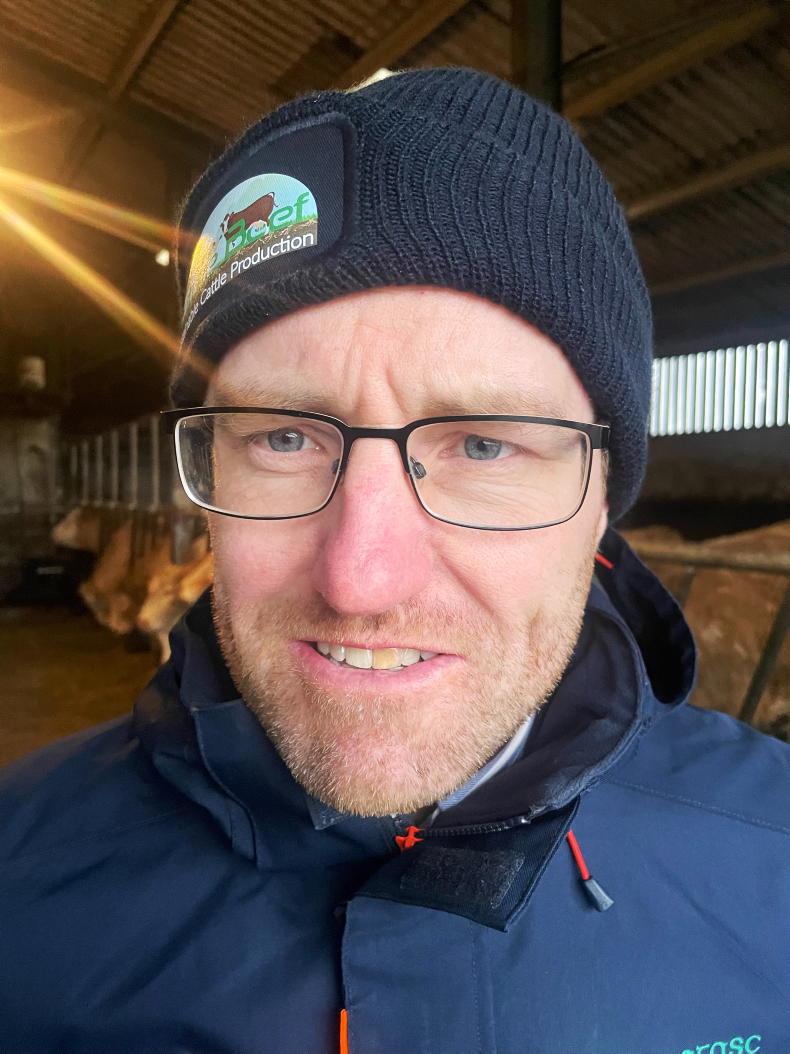
Alan Nolan, Teagasc.
This will have an impact on quality but if you take it that it will take another seven to 10 days to dry the ground and then another seven to 10 days to graze it you are coming up to 17 April and that’s with good weather over the next three weeks.
The forecast doesn’t look great so closing is probably the right option. Nolan explained that some of his clients with sheep have used the ewes to clip off the silage fields and leave them right for closing at the beginning of April but that wasn’t an option on Paddy’s farm.
Quality silage has a major role to play in lowering feed costs on drystock farms and increasing performance.
Table 1 outlines some of the savings that can be made by making better-quality silage. Alan explained that in some parts of the country the winter housing period is now making up 50% of the year, so it’s very import to lower feeding costs and maintain animal performance.
Now is the time to be thinking of silage and cutting dates as the amount of fertiliser that is spread will, in a lot of cases, determine how early that silage can be cut in May. On average, grass digestibility decreases 2% to 3% units per week from the second week of May. This decline reflects the increasing proportion of stem in the grass plant as it matures.
The importance of sulphur application was also discussed. Nolan said: “For silage swards, apply 20kg/ha or 16 units/acre of sulphur per cut at closing. Sulphur is an important nutrient for grassland production and is closely associated with nitrogen uptake and efficiency.
Fertiliser spreader checklist
Francis Quigley from Kildalton College outlined a few tips on fertiliser calibration and making sure that the fertiliser spreader is working properly ahead of the spreading season.
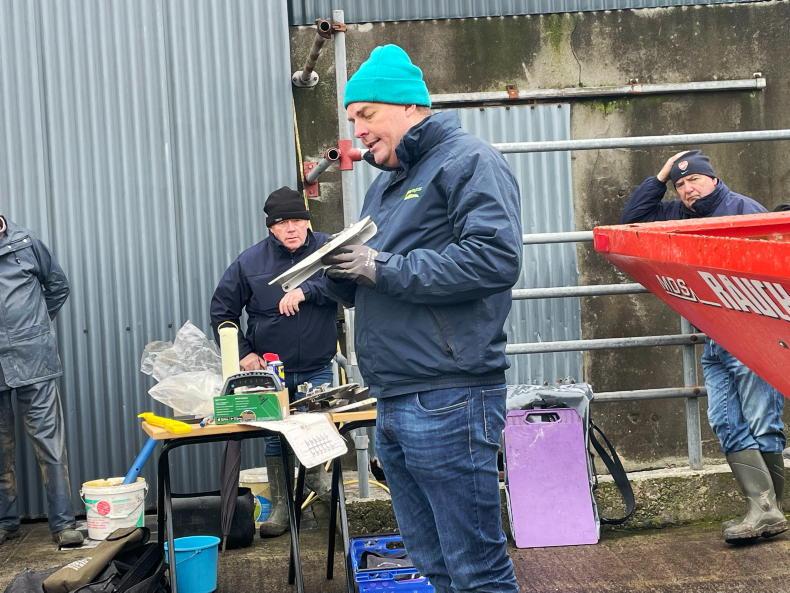
Francis Quigley.
“One of the first things is making sure the fertiliser spreader is connected to the tractor properly. The spreader needs to be level and it shouldn’t be swaying too much on the arms of the tractor. The fertiliser spreader should be sitting about 75cm above the grass crop in the field. Make sure the top link is a strong one and fit for purpose,” said Francis.
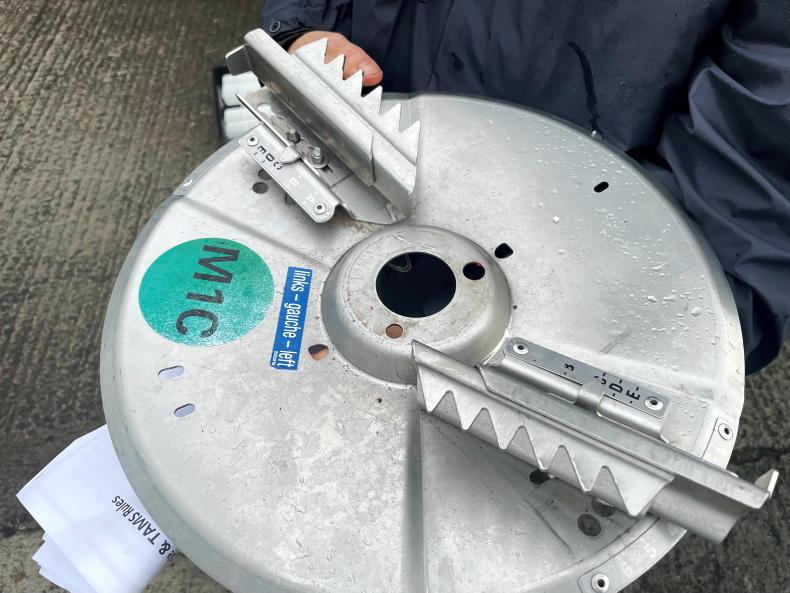
Checking vanes on fertiliser spreader discs is a very important job in advance of spreading.
The discs also need to be inspected to make sure they are moving freely along with the agitator in the fertiliser spreader to ensure there is an even flow on to the discs. Excessive wear on discs can be a major issue in accurate spreading of fertiliser.
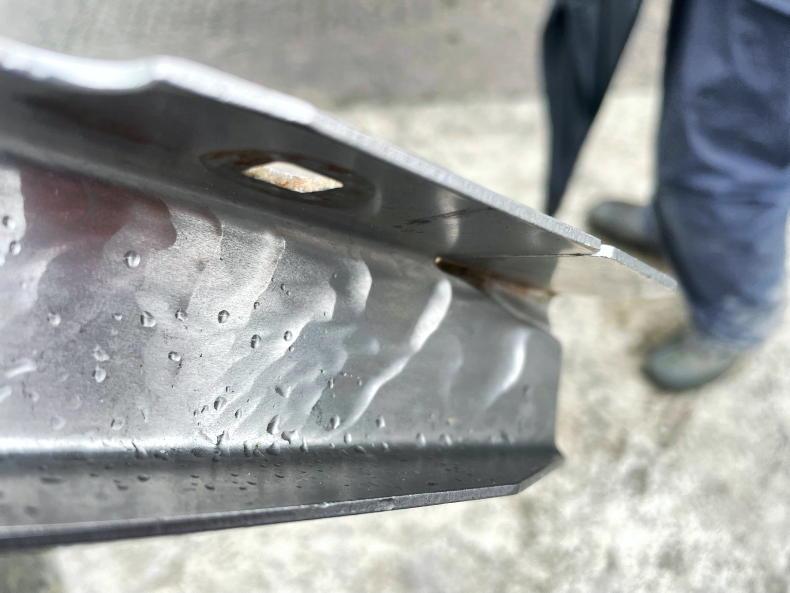
Excessive wear on veins of fertiliser spreading discs can lead to inaccurate spreading.
“Discs should be checked regularly as if there are ripples on the vanes this will affect how far the fertiliser pellets are spread in the field,” Francis said.
1. The grass: low grass covers will work best. This is important for both regrowth and grass quality.
2. The paddock: try and have the paddock square to avoid excessive walking along fence lines. Make sure there is also some shelter in the paddock.
3. The soil type: aim for the dryer fields to be grazed first.
4. The animal: aim for lighter animals that are conditioned to graze. Weanlings are ideal for early grazing.
5. The farmer: you need a flexible attitude and be quick to make changes.
Paddy McGing, Parks, Ballyglass, Claremorris, Co Mayo.Farm size: 24ha (across three blocks).Stocking rate: 1.69kg/ha.Organic nitrogen: 126kg/N/ha.System: store to beef.Cattle numbers: 52.Breeds: Charolais/Limousin.
The wet weather continues to disrupt grazing plans around the country. Teagasc held an early grass walk on the farm of Paddy McGing who farms in Ballyglass, Co Mayo.
Paddy’s farm is a relatively dry farm but the weather is taking its toll. Cattle were turned out at the end of January/early February but had to be rehoused after two weeks and are in since due to the weather.
Paddy runs a store-to-beef system. He buys in store heifers in July and August every year in local marts, such as Balla and Ballinrobe.
The heifers come in around the 430kg mark in July to August each year and are kept for about 12 months and slaughtered the following June, July and August.
Slaughter performance
Average factory price achieved per animal was €2,031 in 2023 with the average beef price coming in at €5.23/kg. Average carcase weight came in at 388kg with an average slaughter age of 27.7 months.
The average grade was an R+ with an average fat score of 3+. Heifers are slaughtered locally in Dawn Meats in Ballyhaunis.
“I don’t go to the mart myself. I get an agent to buy them for me. He knows exactly what I want and he leaves them in the yard for me. I’m working so it makes sense for me and he is probably able to pick up better value than me anyway.”

Paddy McGing.
Paddy explained that 2023 was a frustrating year for finishing cattle with prices taking a dip from the middle of the year onwards. Paddy started to slaughter his heifers in June and the last 14 in August. Had the price for the last 14 cattle stayed at the June price Paddy would have been better off by €3,000 on the load of 14 cattle.
Quality silage
Local Teagasc adviser Alan Nolan led a good discussion on making quality silage. Paddy got some of his silage ground grazed off earlier in the year, but there is currently about 50% of it not grazed.
At the moment, it doesn’t look like this will be grazed given the weather over the last few days and it will be likely closed up in early April for silage without grazing it.

Alan Nolan, Teagasc.
This will have an impact on quality but if you take it that it will take another seven to 10 days to dry the ground and then another seven to 10 days to graze it you are coming up to 17 April and that’s with good weather over the next three weeks.
The forecast doesn’t look great so closing is probably the right option. Nolan explained that some of his clients with sheep have used the ewes to clip off the silage fields and leave them right for closing at the beginning of April but that wasn’t an option on Paddy’s farm.
Quality silage has a major role to play in lowering feed costs on drystock farms and increasing performance.
Table 1 outlines some of the savings that can be made by making better-quality silage. Alan explained that in some parts of the country the winter housing period is now making up 50% of the year, so it’s very import to lower feeding costs and maintain animal performance.
Now is the time to be thinking of silage and cutting dates as the amount of fertiliser that is spread will, in a lot of cases, determine how early that silage can be cut in May. On average, grass digestibility decreases 2% to 3% units per week from the second week of May. This decline reflects the increasing proportion of stem in the grass plant as it matures.
The importance of sulphur application was also discussed. Nolan said: “For silage swards, apply 20kg/ha or 16 units/acre of sulphur per cut at closing. Sulphur is an important nutrient for grassland production and is closely associated with nitrogen uptake and efficiency.
Fertiliser spreader checklist
Francis Quigley from Kildalton College outlined a few tips on fertiliser calibration and making sure that the fertiliser spreader is working properly ahead of the spreading season.

Francis Quigley.
“One of the first things is making sure the fertiliser spreader is connected to the tractor properly. The spreader needs to be level and it shouldn’t be swaying too much on the arms of the tractor. The fertiliser spreader should be sitting about 75cm above the grass crop in the field. Make sure the top link is a strong one and fit for purpose,” said Francis.

Checking vanes on fertiliser spreader discs is a very important job in advance of spreading.
The discs also need to be inspected to make sure they are moving freely along with the agitator in the fertiliser spreader to ensure there is an even flow on to the discs. Excessive wear on discs can be a major issue in accurate spreading of fertiliser.

Excessive wear on veins of fertiliser spreading discs can lead to inaccurate spreading.
“Discs should be checked regularly as if there are ripples on the vanes this will affect how far the fertiliser pellets are spread in the field,” Francis said.
1. The grass: low grass covers will work best. This is important for both regrowth and grass quality.
2. The paddock: try and have the paddock square to avoid excessive walking along fence lines. Make sure there is also some shelter in the paddock.
3. The soil type: aim for the dryer fields to be grazed first.
4. The animal: aim for lighter animals that are conditioned to graze. Weanlings are ideal for early grazing.
5. The farmer: you need a flexible attitude and be quick to make changes.
Paddy McGing, Parks, Ballyglass, Claremorris, Co Mayo.Farm size: 24ha (across three blocks).Stocking rate: 1.69kg/ha.Organic nitrogen: 126kg/N/ha.System: store to beef.Cattle numbers: 52.Breeds: Charolais/Limousin. 










 This is a subscriber-only article
This is a subscriber-only article










SHARING OPTIONS: